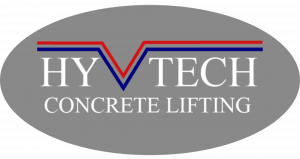
Signs Concrete Needs Lifting or Leveling
According to Darren Averitt, owner of Hy Tech Concrete Lifting, serving southeast Louisiana, addressing uneven or sinking concrete promptly can prevent further damage and ensure that properties remain safe and functional. “Concrete lifting and leveling is a practical solution that restores the integrity of the surface without the need for complete replacement,” Averitt states.
Common Signs of Concrete Issues
Concrete surfaces that require lifting or leveling often exhibit visible signs of distress. Identifying these early can prevent more extensive and costly repairs. Some of the most common indicators include:
Uneven Surfaces: Concrete that is no longer level, whether it’s a slanted patio or a sunken driveway, often needs attention. Uneven surfaces can lead to pooling water, increased wear, and potential trip hazards.
Cracks or Gaps: Cracks in concrete slabs or gaps between concrete sections and adjoining structures, such as walls or steps, are often a result of shifting or settling soil. These cracks can grow over time, worsening the condition of the surface.
Pooling Water: When water collects on concrete surfaces, it may be a sign that the slab has settled or shifted, creating low points. This can lead to further erosion and structural damage.
Door and Window Alignment Issues: Sinking concrete near a foundation may affect the alignment of doors and windows, leading to sticking, jamming, or difficulty opening and closing.
Trip Hazards: Any noticeable elevation differences between adjoining slabs or surfaces create trip hazards, which can pose significant safety concerns for homeowners, employees, or customers.
Causes of Concrete Settling and Damage
Understanding the causes of concrete issues can help in determining the appropriate course of action. Common causes include:
Soil Erosion: Heavy rains, flooding, or poor drainage can wash away soil beneath concrete slabs, leading to settling or sinking.
Poor Compaction: If the soil beneath a concrete slab was not adequately compacted during installation, it may compress over time, causing the concrete to shift.
Tree Roots: Expanding tree roots can lift or crack nearby concrete, particularly in driveways or sidewalks.
Freeze-Thaw Cycles: In regions with fluctuating temperatures, water can seep into cracks in the concrete and expand when frozen, leading to further cracking and deterioration.
Benefits of Concrete Lifting and Leveling
Concrete lifting and leveling offers an efficient way to restore damaged surfaces without the need for a complete replacement. Using specialized techniques like polyurethane foam injection or mudjacking, uneven concrete can be raised and stabilized, correcting the problem at its source.
This approach preserves the existing concrete, minimizing waste and reducing the environmental impact compared to replacement. It also ensures that the surrounding landscape or structures remain undisturbed, as the lifting process requires minimal disruption.
Averitt highlights that these techniques are tailored to address the underlying cause of the issue, providing a long-term solution. “Every project begins with a thorough assessment to identify the root cause of the problem, ensuring that the repair addresses both the symptoms and the source,” he explains.
Preventing Future Concrete Issues
Taking proactive steps to prevent concrete damage can save time and money in the long run. Effective measures include:
Improving Drainage: Ensuring proper water runoff and drainage around concrete surfaces can prevent soil erosion and reduce the risk of settling.
Regular Maintenance: Periodic inspections and addressing small cracks or gaps promptly can prevent larger issues from developing.
Tree Management: Maintaining a safe distance between large trees and concrete surfaces can minimize the risk of root intrusion.
Proper Installation: Ensuring that concrete is poured on well-compacted soil and designed to handle the expected load can reduce the risk of future settling.
Safety and Liability Considerations
Uneven or damaged concrete surfaces are more than just an aesthetic concern; they can pose significant safety risks. Trip hazards on sidewalks, patios, or driveways can result in injuries, leading to potential liability issues for property owners. Addressing these hazards through lifting and leveling not only ensures compliance with safety standards but also demonstrates a commitment to maintaining a safe environment.
When to Consult a Professional
If signs of concrete settling or damage are apparent, consulting a professional for an assessment is essential. Experienced technicians can identify the cause of the issue, recommend the most appropriate repair method, and restore the surface to its original condition.
Concrete lifting and leveling is a specialized process that requires knowledge of materials, techniques, and soil behavior. Attempting to repair concrete without professional expertise may lead to incomplete or temporary fixes.
Averitt emphasizes the importance of relying on qualified experts for these projects. “Repairing concrete requires more than just fixing the surface; it’s about understanding the factors that caused the problem in the first place and addressing them effectively.”
Conclusion
Recognizing the signs of concrete that needs lifting or leveling can protect properties from further damage and ensure safety for those who use them. Regular maintenance, proactive prevention, and timely repairs are key to extending the life of concrete surfaces. By addressing these issues with professional solutions, property owners can maintain functional and safe spaces for years to come.
Morgan Thomas
Rhino Digital, LLC
+1 504-875-5036
email us here
Visit us on social media:
Facebook
Distribution channels: Building & Construction Industry, Culture, Society & Lifestyle, Real Estate & Property Management
Legal Disclaimer:
EIN Presswire provides this news content "as is" without warranty of any kind. We do not accept any responsibility or liability for the accuracy, content, images, videos, licenses, completeness, legality, or reliability of the information contained in this article. If you have any complaints or copyright issues related to this article, kindly contact the author above.
Submit your press release

